Comparison Test: 2020 Kia Niro EV vs. 2021 Volkswagen ID.4
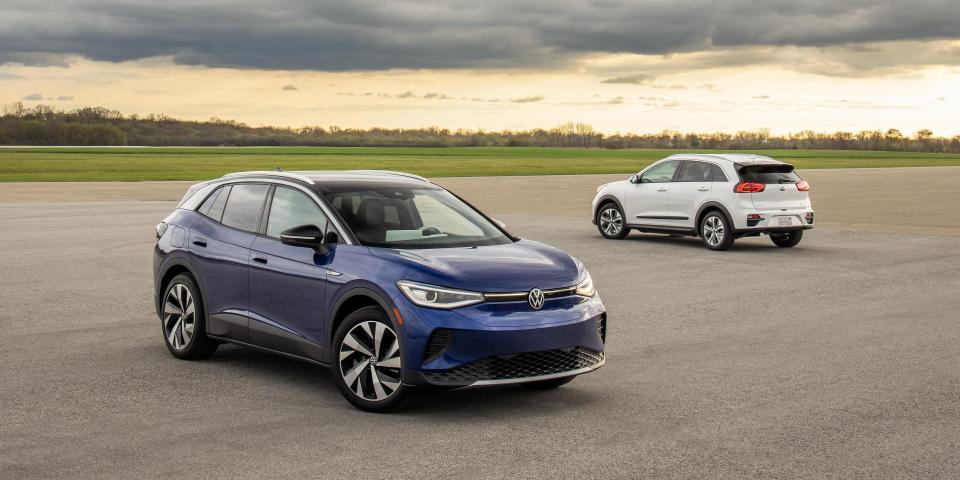
Automakers have appeared to have settled on two targets for their entry-level electric offerings: a range greater than 200 miles of range and a price point of about $40,000, roughly the cost of the average new vehicle. That's precisely where the immensely popular Tesla Model 3 lives. Before you scoff that, the Model 3's range is much more than 300 miles for some variants. Remember, that's the EPA figure. In our 75-mph highway-speed range test, the best result we've managed with a Model 3 Long Range is 230 miles, which is just 20 more than these other two EVs on the affordable end of the spectrum that we've gathered here.
The Kia Niro EV starts at $40,265 and has been for sale for a few years, albeit only in 12 states. Adapted from the hybrid and plug-in hybrid Niro, the EV version doesn't have some of the calling cards of a dedicated EV architecture, such as a front trunk. But it's a practical, pleasant, and affordable EV nevertheless. Proving its greatness in a 2019 comparison test, the Niro's platform mate, the Hyundai Kona Electric, won out against the Chevrolet Bolt EV.
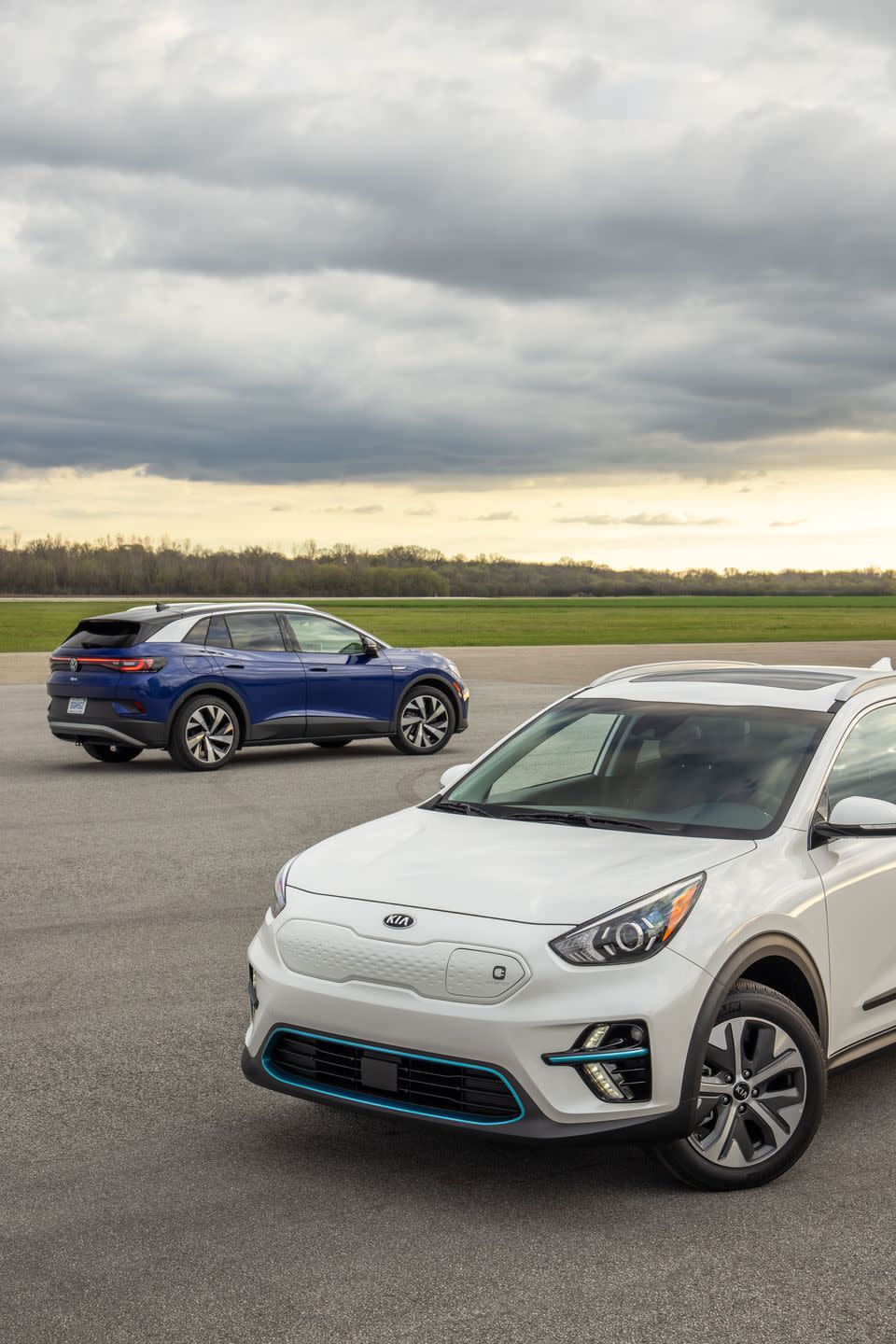
Volkswagen's first foray into EVs in the United States is the $41,190 ID.4, built from the ground up on the company's EV platform that will spawn dozens of variants (although even so, it also hasn't found the room for a frunk). Initially, it's available with a single motor powering the rear wheels, although a more powerful two-motor variant will be added in the near future.
Both cars offer an identical 201 hp, more than 200 miles per charge, plenty of practicality, and, unlike Tesla, still qualify for the $7500 federal tax credit, which make them even more affordable. Let's see how they stack up.
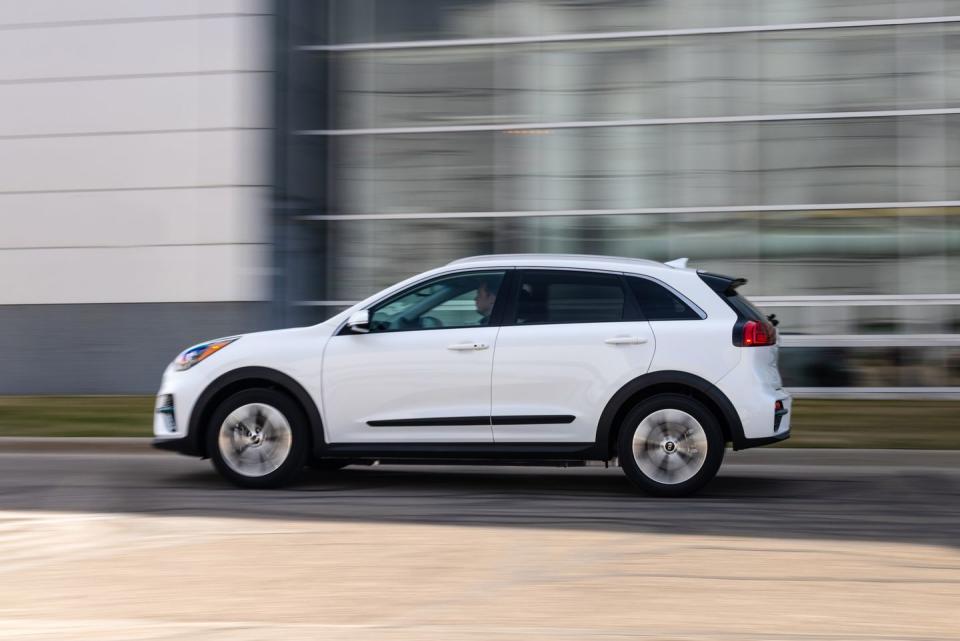
2nd Place:
Kia Niro EV
Highs: Quiet, clever paddle strategy to adjust regenerative braking, impressive efficiency.
Lows: Power can easily overwhelm the front tires, budget interior finishes, smaller back seat and cargo area compared to the VW.
For the buyer who values acceleration, Niro claws to 60 mph in a quick-for-a-small-crossover 6.2 seconds, far ahead of the ID.4's 7.6 seconds It also wins out in cornering capability with 0.88 g on the skidpad, a strong number considering the modestly sized all-season tires. But start hustling the Niro and things go awry. The Niro's overworked front tires squawk with the ferocity of a scorned goose when trying to apply power out of a turn. Driving these two is a hands-on physics lesson on why the driven axle and weight distribution matters, particularly when it comes to torque-rich electric motors that can easily overwhelm the tires.
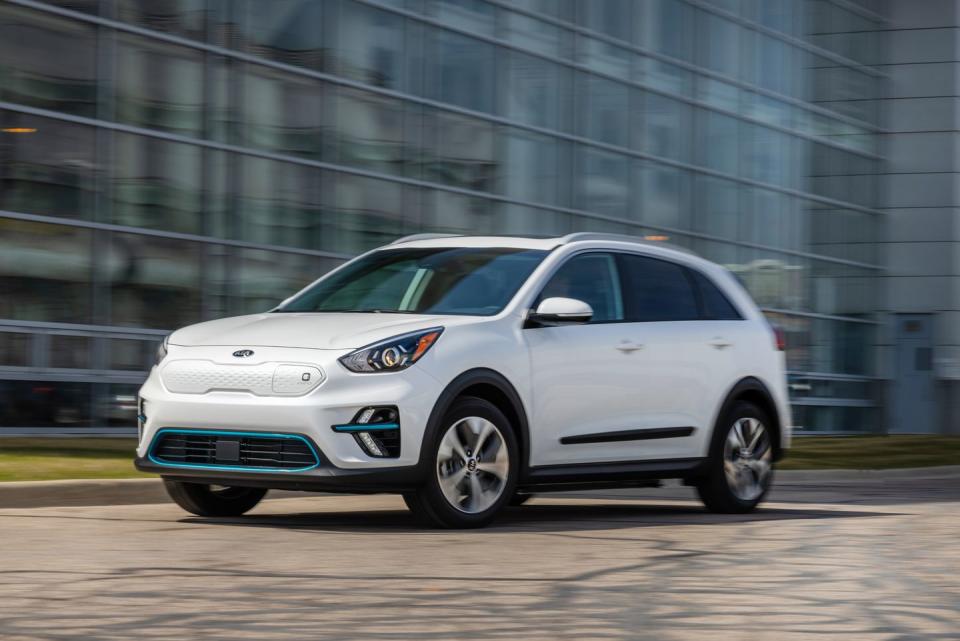
Although the Niro isn't the handling champ, there's still a lot to like, particularly when driven with less enthusiasm. We like the on-the-fly adjustability of the Kia's regenerative braking. There are four levels including 0, which is coasting, that can be quickly adjusted via paddles on the steering wheel. And the current setting can be overridden temporarily by holding a paddle. Brake feel is often sacrificed on the altar of blending regenerative and friction brakes, but the Niro does it better than most and far better than the ID.4, whose brakes we found to be frustratingly non-linear.
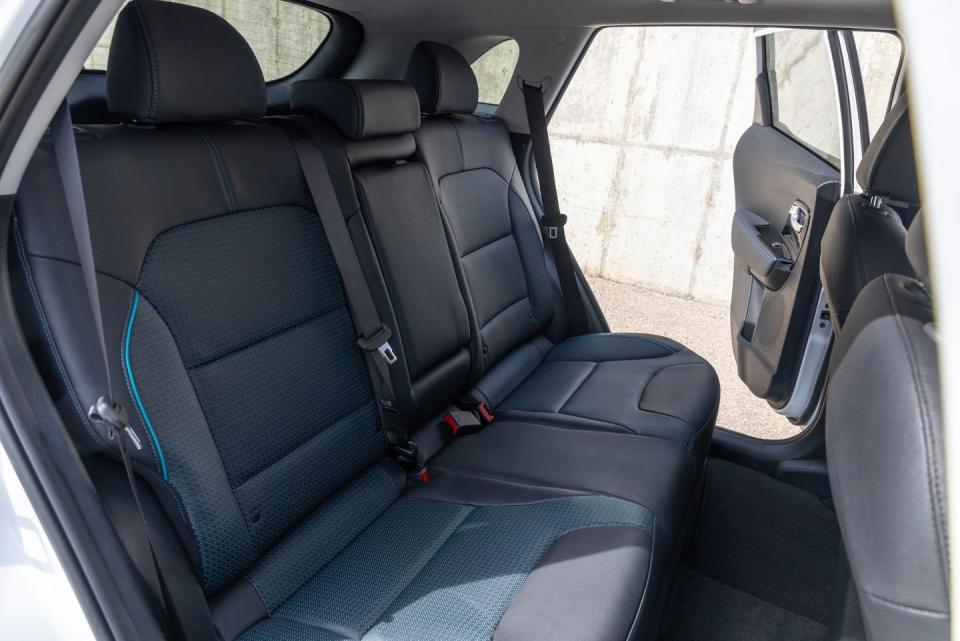
EVs continue to experiment with the sounds they make to warn bystanders of their otherwise near-silent presence, and we hope Kia finds a better one than the Niro's foghorn-like reversing alert (owner's forums are awash in how to unplug their cars' speakers to defeat it).
The relatively higher seating position in both front and rear seats is a tell from the Niro's origins, the result of stuffing a battery pack underneath an existing architecture. Still, the Niro has an adult-habitable back seat, even though it's not as spacious as the ID.4's. We much preferred the more conventional and relatively lower seating position in the ID.4, too. The Niro's hard plastics on the interior are a little too entry level as well, especially at the $47,145 price of our EX Premium test car.

The ID.4 also boasts a longer EPA range than the Niro (250 miles versus 239), but in our 75-mph highway test, they achieved an identical 210 miles. That's a solid result, made a bit more impressive considering the Niro does it with nearly 20-percent less battery capacity than either the ID.4 (64.0 kWh versus 77.0 kWh) or the Tesla Model 3 or Y. The Niro also has an optional heat pump, part of the $1100 cold-weather package, which will improve mileage in cold temperatures, while the ID.4 doesn't (although ID.4s in markets outside the U.S. offer a heat pump).
It's really no surprise the older Niro comes up short against the ID.4. An older design, the Kia will soon be replaced by a purpose-built EV. Kia and Hyundai will soon offer the 2022 EV6 and Ioniq 5 on that dedicated architecture. When those land, we'll see how they fare against the ID.4.

 Yahoo Autos
Yahoo Autos 